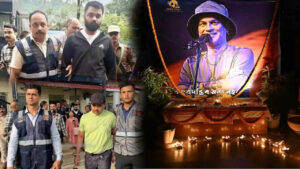In the fast-paced world of aviation technology, keeping up with evolving passenger expectations often means integrating modern software into legacy hardware systems—a challenge that demands both creativity and technical expertise.
This challenge was met head-on by Arjun Mangad, a firmware and software engineer who played a crucial role in optimizing inflight entertainment (IFE) software for retrofitted aircraft, ensuring cutting-edge digital experiences without costly hardware overhauls.
At the time, the aviation industry was facing a dilemma. Airlines wanted to modernize their inflight entertainment systems with the latest features, yet replacing entire hardware platforms across fleets was prohibitively expensive. Instead, many opted to retrofit existing systems, but this introduced a new set of challenges: older hardware struggled to run the latest applications efficiently. The mismatch between aging processors, memory constraints, and increasing software demands was a major obstacle to delivering high-performance IFE experiences.
Rather than accept these limitations, he took a deep dive into the technical core of these systems, exploring ways to maximize efficiency while minimizing costs. Their expertise in Linux device trees and memory allocation became the foundation for a series of groundbreaking optimizations that significantly enhanced the performance and lifespan of IFE systems on retrofitted aircraft.
Overcoming Hardware Constraints with Software Innovation
One of the key challenges was memory management. Many of the legacy systems in use had severe memory constraints, limiting the ability to run modern applications smoothly. This bottleneck posed a risk to both system stability and passenger experience, as software failures or sluggish performance could lead to dissatisfaction and costly maintenance interventions.
Arjun tackled this issue by analyzing and restructuring how memory was allocated, identifying inefficiencies and areas where optimization could free up resources. By fine-tuning memory management strategies and reconfiguring the Linux device tree, they were able to reduce memory consumption significantly—allowing the same aging hardware to support more advanced software features without performance degradation.
This resulted in a major increase in the usable lifespan of inflight entertainment hardware, reducing the need for airlines to invest in costly hardware upgrades. By extending the viability of existing systems, millions of dollars were saved, and passengers continued to enjoy modern entertainment options without interruption.
“The challenge wasn’t just making it work—it was making it work efficiently within the limits of the existing hardware,” he called. “By reengineering memory usage, we ensured these systems could last significantly longer without sacrificing performance.”
Cost Savings and Industry Impact
For airlines, the implications of this work were immense. Aviation hardware replacements come with steep costs—not only for the equipment itself but also for installation, regulatory approvals, and aircraft downtime. By prolonging the usability of legacy IFE systems, Arjun helped reduce operational expenses and extend the return on investment for airlines that had already invested in existing platforms.
Beyond cost savings, these optimizations played a role in sustainability. The aviation industry has long sought ways to reduce electronic waste and maximize the efficiency of onboard systems. By refining software to be more resource-efficient, less outdated hardware was discarded, contributing to a more environmentally responsible approach to aviation technology upgrades.
Additionally, this innovation improved passenger experience and airline competitiveness. Inflight entertainment has become a critical differentiator in air travel, with passengers expecting seamless access to streaming content, interactive maps, and personalized entertainment options. Thanks to these software enhancements, airlines were able to meet evolving digital demands without requiring an expensive fleet-wide hardware overhaul.
Legacy and Future of Retrofitted Aviation Systems
The success of these optimizations demonstrated the power of software-driven innovation in aviation, proving that modernizing inflight experiences doesn’t always require replacing expensive hardware. Arjun Mangad work set a precedent for how airlines and technology providers can extend the lifecycle of existing aviation systems through advanced firmware and software engineering techniques.
Today, as aviation technology continues to evolve, the lessons learned from this project remain relevant. Engineers across the industry are increasingly turning to smart software solutions to optimize performance, reduce costs, and enhance sustainability. The ability to push the boundaries of legacy hardware through efficient software engineering is now recognized as an essential skill in the ever-changing world of aviation technology.
By merging deep technical expertise with innovative problem-solving, Arjun played a pivotal role in redefining the potential of retrofitted inflight entertainment systems—proving that engineering ingenuity can keep aircraft flying smarter, longer, and more efficiently than ever before.












